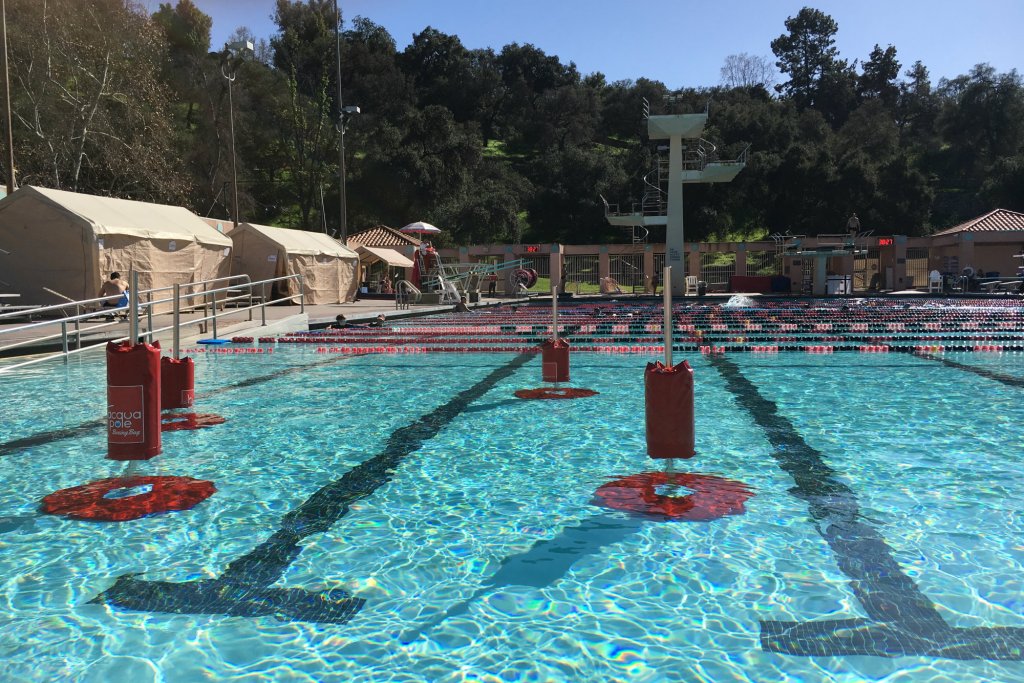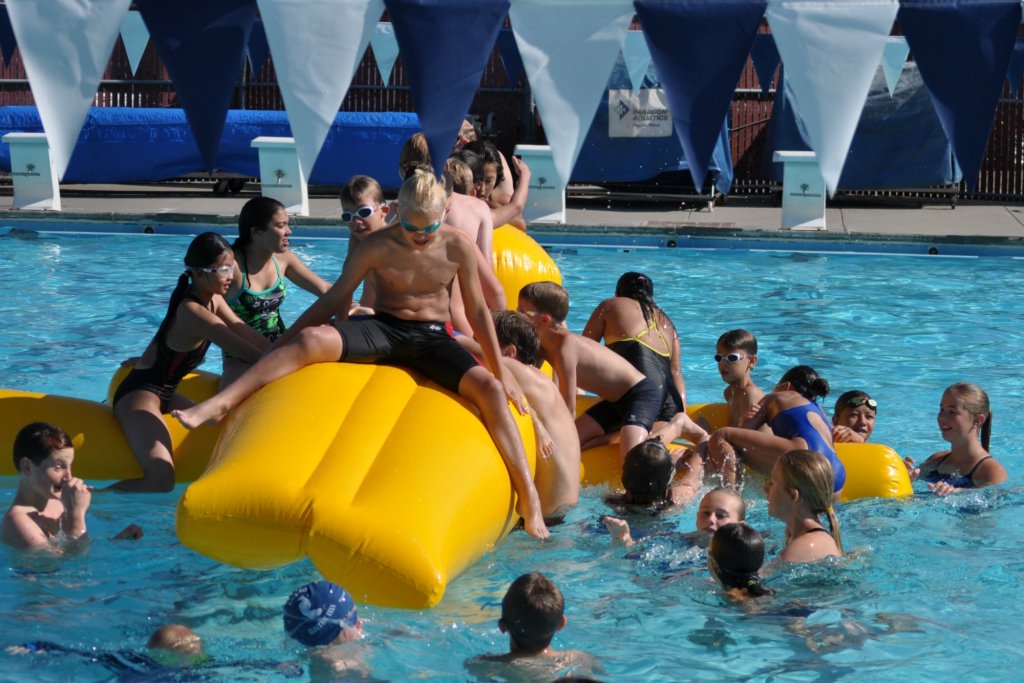As programming goes, the polar bear plunge seemed like a given: Open the pool during winter and invite brave souls to take an icy dip. It had become a regular event. But when new Aquatic Supervisor Rebecca Sermeno asked how it was being marketed, the staff collectively shrugged its shoulders.
“Everyone just assumed people knew about the plunge because it had been going on for years,” recalls Sermeno, with the Livermore Area Recreation & Park District. “But you can’t just come up with a tagline and hope it happens.”
So she spent some money for banners and used social media to spread the word. The result? Attendance doubled from the previous year.
As budgets continue to get squeezed, facilities face more pressure than ever to meet profit margins or at least recover costs. “If you don’t make money, you have to close the doors,” says John Spannuth, executive director and CEO of the United States Water Fitness Association. “It used to be I’d talk to parks and recreation departments about making money and they’d say ‘We don’t have to make money. Taxes pay for that.’ Now people ask me how to make money.”
Finding creative ways to make programming more popular — and profitable — can mean the difference between keeping pools open or shutting them down. Here, Sermeno and other proactive managers share their strategies to staying in the black.
How to begin
To help determine the proper profit level for your operation, first look at your facility’s vision and mission statement.
“Managers need to align their programming expectations with the mission of the actual organization,” says Joe Goss, aquatics chief for Los Angeles County.
For example, the sprawling county Goss presides over has a mission to provide lifesaving skills in safe environments regardless of the cost. That means Goss doesn’t think about profit. On the other hand, Sermeno aims for a 40- to 80% profit margin, depending on the facility. Bottom line: Managers who don’t know the goals of their organization would be wise to find out, experts say.
Next, managers must consider the type of facility. Is it a nonprofit or for-profit? Is it seasonal or year-round? Is it a traditional lap pool or a leisure-style pool with lazy river and play features? Accounting for those variables will help inform what types of programs are possible and desirable, Spannuth says.
Just as important to determining appropriate programming are patron demographics. Does your facility serve a low-income population or more high-income? Do you cater to Spanish-speaking groups or mainly English-speaking? Are your facilities spread across a wide geographic area or concentrated in a smaller area?
Only after answering those questions about vision, facility type and demographics can managers hope to develop programming that will profit the facility and its patrons.
“Evaluate each program in accordance with its ability to support your organization’s mission/vision, cost to operate the program and the customers’ ability to pay,” says Nicole Van Winkle recreation services manager for the City of Colton, Calif., who’s also an account executive for St. Louis-based aquatics specialty firm Counsilman-Hunsaker.
Three Canu2019t Miss Program Ideas
Experts recommend these three popular programs to boost profitability:
Swim camps These typically last at least one week and offer parents much needed daycare during the summer. Facilities can charge a premium to let parents drop their children off an hour early and pick them up an hour later with minimal staff cost.
Inflatables These modular floating play zones, complete with mini waterslides, are all the rage right now, and perfect for facilities that canu2019t afford full-blown waterslides. Facilities can charge extra for their use or just incorporate them as a way to attract more patrons.
Paddleboards These surfboard-like floatables represent another current trend. If you can afford to purchase some, you can do everything from paddleboard training to paddleboard yoga. To defray costs, consider using boards from an outdoor venue in the offseason.
Developing profitable programming
Next, look at your pool and see where it isn’t being used and when. Then devise programs to fill those gaps.
“Space is money,” Spannuth says. “If there is a space not being used, you’re losing money.”
These programs must be analyzed to project whether they will generate enough profit to meet your facility’s needs. Even the best-designed programs won’t be successful unless managers answer a number of key questions:
How much will the program cost? With this question, managers must consider both how much it will cost to operate and the minimum number of staff needed. “A good manager is constantly reviewing each of their programs, especially in the summer,” Sermeno says.
Have you considered extraneous costs? Avoid the mistake made by many managers, who forget to include the costs of marketing, administrative tasks, utilities and prep time. “While it can be a tedious process to determine how much of your electricity bill should be allocated to this program, you cannot truly make effective decisions regarding cost recovery until you can accurately forecast all your expenses,” Van Winkle says.
Is the program prime time or off time? Peak time differs by facility, but it’s when the facility is the busiest. The struggle here is that everybody wants to have the pool at prime time, but space is limited. However, you can charge more for programs that are at peak times.
Are you effectively using all parts of the facility? Remember any water that’s not being used is wasted money and opportunity. But that opportunity extends beyond just the pool, Spannuth says. For example, office space can be used for birthday parties. Decks can become workout zones for parents while kids are in learn-to-swim classes. “You need to turn your space into money,” Spannuth says.
Does your programming address all the needs of your community? Too often, special interest groups such as swim clubs dominate a facility. But, by their very nature, special interests exclude a wide swath of the community. But they are often the loudest voices. Operators should avoid the temptation to just give the most vocal patrons what they want, Spannuth says. “A lot of facilities do narrow casting because they are looking at a couple special interest groups instead of the whole population,” he says. “Why not enlarge your group?”
-
New Fitness Tool by Acquapole Offers Variety of Water Exercises
The tool can be converted for different aquatic fitness uses

Enhancing programming
After answering those questions, it’s time to look at ways to maximize your facility’s income potential.
Van Winkle recommends developing streamlined ways to create, organize and cancel classes when needed. “Managers must be able to accurately forecast what times and levels the community will desire, quickly adjust as necessary during enrollment … and cancel classes that will not be profitable.”
Another alternative, she and others say, is to combine smaller classes of the same program together.
Online registration has made this process easier than ever, Sermeno says. Even though her facility prints a brochure like most others, she treats it more like a guideline than something set in stone.
“You have to be flexible,” she says. You also need to establish a system of data capturing and constantly review that data to see which classes are working and which ones aren’t, she adds.
That doesn’t mean every program must meet a certain threshold. Sermeno and others say profitable programming often means balancing more popular activities with less popular ones that may be important to the organization’s goals and mission. For departments with more than one pool, it may also be possible to balance higher-income areas with lower-income areas. For example, Sermeno strives to generate higher profit margins from her facilities in upper-income areas, but allows tighter margins in low-income areas.
Grants and civic groups also serve as a way to balance program costs. Spannuth recommends reaching out to foundations such as the Kiwanis group. Sermeno relies on a $20,000 grant from the Kaiser Foundation to fund discounted swim lessons.
To maximize the potential of any program, a facility needs the staff to engage. Sermeno makes a point of doing inservice training about programs like she does about water safety and lifesaving skills.
“Just as they understand 30 compressions to two breaths, they should understand that we have two great events in the summer and they’re going to be ambassadors of those programs,” she says.
That training includes everyone right down to the office staff. “What runs and keeps us running is revenue, so we have to put as much effort into training our staff on these revenue programs as keeping the waterslide running,” she says.
Instructors play a key role in this. Managers should encourage teachers to become salespeople for their programs. Simple changes can make a difference: Ask participants to come back for the next class; encourage them to invite a friend; or remind them when it’s time to sign up again.
But the simplest way to sell programs is to make them fun. “If you go to a party and you don’t have fun, and that same person has another party, are you going to go?” Spannuth asks.
Finally, don’t forget to ask for help. Sermeno relies on several key managers she can call “at the drop of a hat” when she has questions or just needs to bounce ideas off someone.
“If I have a great program, I’ll give you everything you need to do it too,” she says. “Because, in the end, we’re all trying to do the same thing.”
-
New Fitness Tool by Acquapole Offers Variety of Water Exercises
The tool can be converted for different aquatic fitness uses


